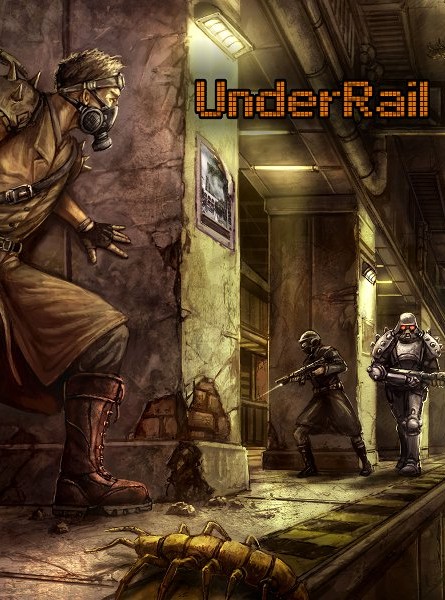Underrail Preview
-
Category: PreviewsHits: 18768

Article Index
Page 5 of 5
Level and Quest DesignAbout the only criticism I have for Underrail's quest design is that it didn't surprise me. The game covers all the bases, offering a variety of tasks, from saving hostages to stealing key cards in highly surveilled gambling dens, and the vast majority of these have at least a couple of possible solutions depending on your build, but there's nothing that quite jumps at you for its uniqueness, whether for narrative or design reasons.
That said, Underrail is decidedly at its best not when it has you running undoubtedly entertaining errands in its populated settlements, but when it sends you to desolate locations, and that's because its dungeon design is a fantastic hybrid of Fallout and Deus Ex. Every location has multiple entry and exit points, plenty of locked doors, containers, surveillance cameras, computers, trapped passageways and more. There's a wonderful sense of place to them too, an underlying logic that helps you forget the fact that you're dealing with the same repeated art assets over and over: see a camera and you're likely to find the surveillance monitors (which you can utilize, by the way) somewhere nearby, find traps and you're likely to find those who placed them, and so on and so forth. They're little details that are easy to overlook, but manage to greatly enhance the atmosphere of the game.
If I had to pick one location among the ones I visited during the alpha, I'd go with Depot A, in Junkyard, which I consider the crown jewel of the game. It's a wonderfully designed location, and incredibly challenging too: you'll find everything in it, from minefields to acid-spitting dogs, including one of the few NPCs with anything remotely interesting to say, but it also exemplifies how frustrating the game can occasionally become, especially for a non-optimized build. More than once I was forced to go back to the town's medic with the proverbial tail between my legs several times, but it only heightened my satisfaction when I was finally able to find the item I was looking for in it. Looking back at it, I'm not sure I'd want it to be further balanced, to see it become slightly smoother and more open to diverse builds: call it selfishness (or even Stockholm syndrome) but I've grown very fond of the place, and feel like other players should experience it like this, unmarred and unchanged, rough as it is. While it might seem insurmountable at first, it is, just as any other challenge the game poses, perfectly beatable with the right amount of patience, ingenuity and persistence.
Atmosphere
To be frank, Underrail looks about how you'd expect from a title developed by a single person who isn't an artist to look: environments are crude and same-y, characters and creatures animate weirdly, and the interface looks a tad ugly. While the images are never really difficult to read and the assets convey what they want to convey decently enough, this isn't a game I'd ever praise for its art style, especially after the bad first impression left by its title screen, a moody but nonetheless amateurish piece of art.
Sound-wise on the other hand, the game fares much better. While sound effects are limited and unimpressive, the few electronic tracks that make up the soundtrack hit all the right notes: there's just enough melody to be noticeable, but not enough to disrupt the cold and industrial atmosphere that permeates the title. In many ways, Underrail's soundtrack does a better job at communicating themes and creating a narrative than the title's dialogue and plot, and while that's in part due to the writing's deficiencies, I still feel that accomplishment deserves some serious praise.
Technical Considerations
For an alpha of an indie title, I have to say Underrail doesn't feel particularly unpolished. The game lacks some of the documentation a newcomer is likely going to need to figure out some of the most arcane functions of the interface, though at least for now the official forums and other online sources are filling that gap. There are also precious few options at this time, with absolutely no difficulty options (I don't know if they're planned for later or if the game will take a "same for everyone" approach to balance), few graphical options (resolution and font size), and a few settings regarding the speed of turn-based combat.
The game crashed me a couple of times, and one dialogue tree was stuck in a loop where I could say I had completed a mission to a quest giver over and over and over, but aside from that I didn't encounter any bugs, though I can't vouch to the accuracy of the behind-the-scenes math since, to be perfectly honest, I didn't really have time to check the combat log in great detail.
Conclusions
Underrail's alpha wasn't anywhere close to perfect, as it should be abundantly clear by now, but still shows an immense amount of potential. The game is very entertaining even in this early and unpolished state, and, assuming something doesn't go very wrong during the last stretch of development, it should, at the very least, be as entertaining on release. Stygian Software's title tried to take the pen and paper aspirations of Fallout and Arcanum and a pinch of the simulational aspirations of the early 3d titles from Looking Glass Studios and Ion Storm, and added to them a great dose of ambition (again, it's worth noting that the game was, aside from some art, completely developed by one single person), so you'd be forgiven for being a bit skeptical about the results. And yet it works, and in light of the recent news of the financial success of the title on Steam, the real future is looking a lot brighter than the fiction of it that Underrail presents. Brighter than ever, in fact.


